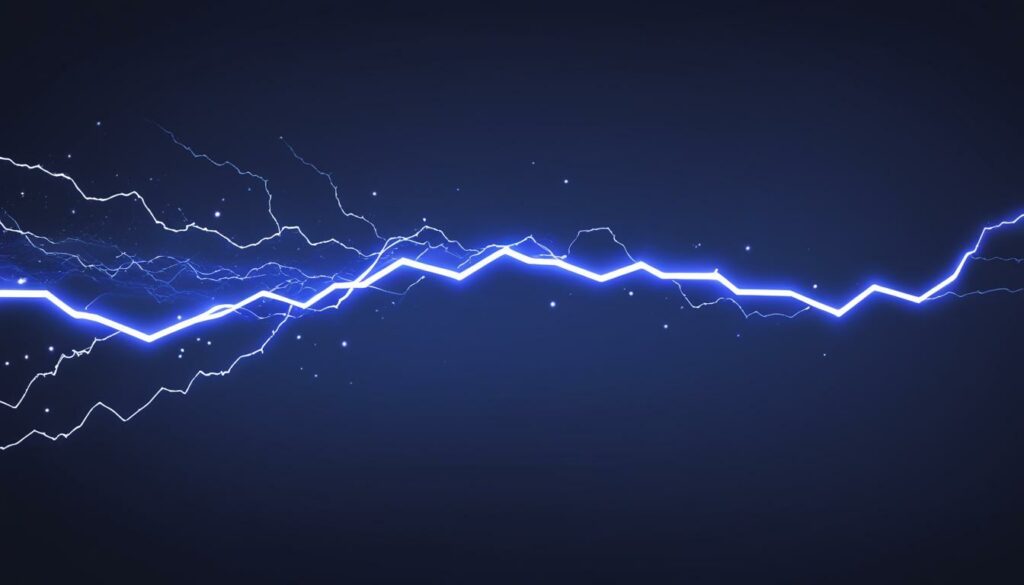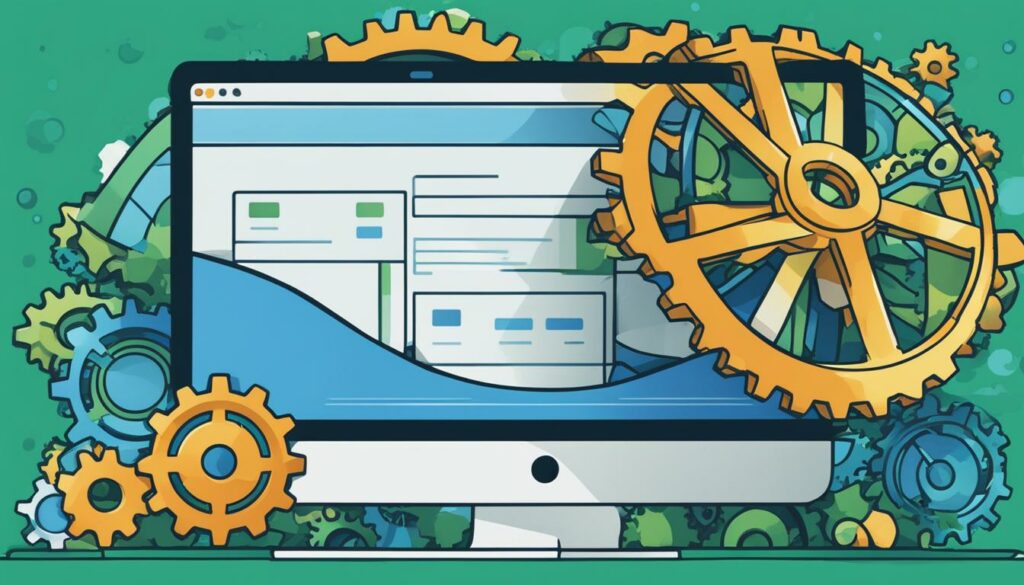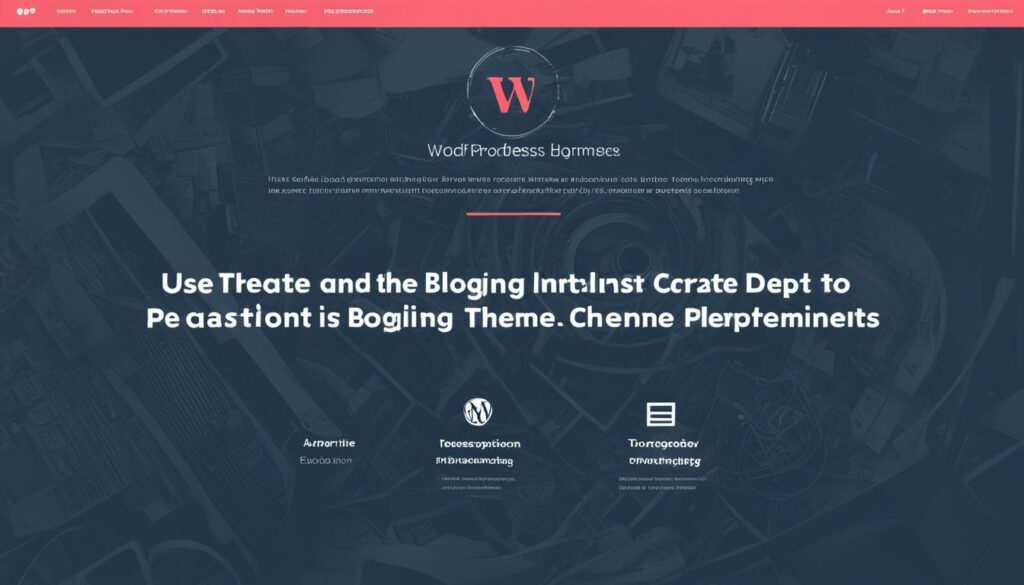Have you ever experienced slow-loading websites that make you want to close the tab and move on? Slow page loading times can be frustrating and detrimental to a website’s success. That’s where website caching comes in. Website caching is a technique used in web development and networking to improve the performance and efficiency of data retrieval. By temporarily storing frequently accessed data in a cache, website caching helps reduce load times, alleviate server burden, and ultimately enhance the user experience.
Website caching can be implemented in various ways, such as browser cache, server cache, and content delivery network (CDN) caching. Browser caching involves storing website assets like images, CSS files, and JavaScript files on the user’s local machine. This allows the browser to fetch the cached assets instead of downloading them from the server every time the website is accessed, resulting in faster page loading times.
Server-side caching, on the other hand, involves storing cached website data on the server. This can be done using a CDN or caching plugins, such as W3 Total Cache or WP Rocket for WordPress websites. By serving cached content instead of generating it from scratch for every request, server caching reduces the server load and improves response times.
So, what are the benefits of website caching? Firstly, it significantly improves page speed, which is crucial for user experience and search engine rankings. Research shows that even a few seconds delay in page loading time can increase bounce rates. By implementing website caching strategies, you can optimize your website’s performance, drive engagement, and boost conversions.
Additionally, website caching helps reduce bandwidth usage, resulting in cost savings. It improves scalability, allowing your website to handle increased traffic without slowing down. Caching also plays a role in improving SEO by enhancing page speed, which is one of the ranking signals used by search engines like Google.
To sum it up, website caching is a powerful tool for improving website performance and user experience. By reducing load times and optimizing resource retrieval, caching techniques and strategies can help your website stand out in the digital landscape. For optimal caching performance, we recommend BoostedHost’s WordPress Hosting. Sign up now through this link: www.boostedhost.com/wordpress-hosting.
Key Takeaways:
- Website caching is a technique used to improve data retrieval performance and reduce load times.
- It involves temporarily storing frequently accessed data in a cache, either on the client-side or server-side.
- There are different types of caching, including browser cache, server cache, and CDN caching.
- Website caching improves page speed, user experience, and can have SEO benefits.
- BoostedHost’s WordPress Hosting is recommended for optimal caching performance.
The Importance of Page Speed
In today’s fast-paced digital landscape, website performance optimization is more important than ever. One crucial factor that directly impacts the success of a website is page speed. When it comes to user experience, every second counts. Slow-loading websites not only frustrate visitors but also have a detrimental effect on bounce rate, search engine rankings, and overall brand perception. In fact, research has shown that even a few seconds delay in page loading time can significantly increase bounce rates.
Improving website speed is a top priority for website owners who want to drive engagement, increase conversions, and enhance overall website performance. And that’s where cache management comes into play.
The Role of Cache Management
Cache management is a key aspect of website performance optimization. By implementing effective caching techniques, you can reduce the time it takes to retrieve and load data, resulting in improved page speed. Caching involves storing frequently accessed data, such as images, scripts, and stylesheets, in a cache. This temporary storage allows the website to serve the data quickly, without the need to fetch it from the server every time a user visits the site.
Optimizing page speed is not only about delivering a seamless user experience; it also has a direct impact on search engine rankings. Search engines, like Google, consider page speed as one of the ranking factors. So, by improving your website speed through cache management, you can potentially boost your organic search visibility and attract more traffic.
Implementing cache management strategies involves various techniques, such as enabling browser caching and server-side caching. Browser caching stores website assets on the user’s local machine, allowing subsequent visits to the website to load faster. Server-side caching involves storing cached website data on the server, optimizing response times and reducing server load.
Caching Best Practices
When it comes to cache management, following best practices is essential to ensure optimal performance. Some key caching best practices include:
- Setting appropriate cache expiration times to balance freshness and performance
- Regularly monitoring and updating cache configurations to adapt to evolving website needs
- Using caching plugins or solutions that offer advanced caching options
- Considering the specific caching needs of different types of content, such as full-page caching, object caching, and fragment caching
By implementing these caching best practices and managing your website’s cache effectively, you can significantly improve page speed, enhance user experience, and boost your website’s overall performance.
BoostedHost’s WordPress Hosting for Optimal Performance
When it comes to superior cache management and website performance optimization, BoostedHost’s WordPress Hosting is the go-to solution. By combining a powerful infrastructure with advanced caching technologies, BoostedHost ensures lightning-fast page loading times and exceptional user experience.
Sign up now for BoostedHost’s WordPress Hosting and take your website’s performance to the next level:
| Benefits of BoostedHost’s WordPress Hosting |
|---|
| Lightning-fast page loading times |
| Advanced cache management for optimal performance |
| Highly scalable infrastructure to handle increased traffic |
| Robust security measures for peace of mind |
| 24/7 expert support to assist you every step of the way |
Don’t settle for slow-loading websites. Boost your website’s performance with BoostedHost’s WordPress Hosting. Sign up now by visiting www.boostedhost.com/wordpress-hosting.
Understanding Page Speed and Its Factors
Page speed is a crucial aspect of website performance. It refers to how quickly a web page’s content loads when someone visits the page. The loading speed of a page plays a significant role in user experience and can impact metrics such as bounce rate and user engagement.
Several factors influence page speed:
- The number of images, videos, and other media files on the page can affect loading times. Optimizing and compressing media files can help improve page speed.
- The themes and plugins installed on a website can also impact page speed. Some themes and plugins may add unnecessary code or scripts that slow down loading times.
- The coding and server-side scripts used in website development can influence page speed. Well-optimized code and efficient server-side scripts can significantly improve loading times.
To measure page speed and identify areas for improvement, various tools are available:
- Google PageSpeed Insights provides detailed reports on page speed performance, highlighting areas that need optimization.
- Pingdom Website Speed Test allows you to analyze the loading speed of your website and provides insights into potential performance issues.
- GTmetrix offers a comprehensive website speed analysis, providing recommendations and insights to optimize page speed.
By understanding the factors influencing page speed and utilizing these tools, you can identify areas for improvement and optimize your website for faster loading times, resulting in an enhanced user experience.

Optimizing page speed is crucial for delivering a seamless user experience and improving website performance.
How to Improve Page Loading Speed
Improving page loading speed is essential for a seamless user experience. Slow-loading websites can frustrate visitors and lead to high bounce rates. To keep your audience engaged and satisfied, consider the following best practices:
Choose a Performance-Optimized Hosting Solution
Opting for a hosting solution specifically optimized for performance, like BoostedHost’s WordPress Hosting, can significantly improve page loading speed. With dedicated resources and advanced caching mechanisms, your website can handle high traffic volumes and deliver content quickly.
Compress and Optimize Images
Large image files can significantly slow down page loading. By compressing and optimizing images, you can reduce their file size without sacrificing quality. Use tools like ImageOptim or TinyPNG to compress images before uploading them to your website.
Reduce Unnecessary Redirects
Redirects increase loading times by adding an additional server request. Minimize the use of unnecessary redirects by ensuring your website’s internal and external links are properly set up and do not redirect unnecessarily.
Caching Best Practices
Caching is a powerful technique that stores data temporarily for faster retrieval. By employing caching best practices, you can enhance page loading speed:
- Enable browser caching to allow repeated visitors to load pages faster by storing static resources locally.
- Consider implementing full-page caching, object caching, and fragment caching to optimize specific parts of your website.
Following these caching strategies can significantly improve page loading speed and create a smoother browsing experience for your visitors.

The Role of Browser Caching
Browser caching plays a crucial role in improving website performance and reducing page loading times. When you visit a website, certain assets like images, CSS files, and JavaScript files are stored in your browser’s cache. This means that when you revisit the same website, instead of downloading these assets from the server again, your browser can retrieve them from the cache, resulting in faster load times.
Enabling browser caching is a straightforward process that involves setting HTTP headers like “Cache-Control” and “Expires”. These headers instruct your browser on how long to cache the resources. By enabling browser caching, you can significantly enhance your browsing experience and optimize the speed of websites you frequently visit.
BoostedHost’s WordPress Hosting is highly recommended for optimal browser caching performance. With BoostedHost, you can ensure that your website assets are efficiently cached, providing faster load times for your visitors. Take advantage of this powerful hosting solution and sign up now through this link: www.boostedhost.com/wordpress-hosting.

Advantages of Browser Caching
Enabling browser caching offers several advantages:
- Improved Page Load Times: By serving cached assets, browser caching reduces the time it takes to load web pages, resulting in a faster overall browsing experience.
- Bandwidth Savings: Caching assets locally reduces the need to download them again from the server, saving bandwidth and improving network efficiency.
- Reduced Server Load: With browser caching in place, the server receives fewer requests for static assets, reducing the load on the server and improving its performance.
- Enhanced User Experience: Faster load times contribute to a positive user experience, increasing engagement and reducing bounce rates.
By enabling browser caching, you can optimize your website’s speed, improve user satisfaction, and boost the overall performance of your online presence. Take advantage of this simple yet effective technique to provide a seamless browsing experience for your visitors.
The Benefits of Server-Side Caching
When it comes to website performance, server-side caching is a game-changer. By storing cached website data on the server, you can significantly improve response times and overall website performance. Server caching relieves the server from generating content from scratch for every request, reducing the load and ensuring faster delivery of cached content.
There are different ways to implement server-side caching, such as using a content delivery network (CDN) or caching plugins like W3 Total Cache or WP Rocket for WordPress websites. These tools allow you to store cached content on the server, streamlining the data retrieval process and providing a seamless experience for your website visitors.
Server-side caching offers numerous benefits, including:
- Improved Website Speed: By serving cached content instead of regenerating it, server caching can dramatically reduce loading times, ensuring a smooth and fast browsing experience.
- Reduced Server Load: With cached content readily available, the server doesn’t have to process the same requests repeatedly, resulting in lower resource usage and improved server performance.
- Enhanced User Experience: Faster page loading times and smoother navigation contribute to a positive user experience, increasing engagement and reducing bounce rates.
Implementing server-side caching is a highly recommended strategy for optimizing your website’s performance. It allows you to deliver content quickly and efficiently, ensuring that your visitors have a seamless browsing experience.
BoostedHost’s WordPress Hosting: The Perfect Solution
If you’re looking for an optimal caching performance and exceptional website speed, BoostedHost’s WordPress Hosting is the ideal choice. With high-performance servers and advanced caching technologies, BoostedHost ensures that your website delivers lightning-fast loading times.
Take your website’s performance to the next level by signing up for BoostedHost’s WordPress Hosting now! Visit www.boostedhost.com/wordpress-hosting to learn more.

Types of Website Caching
Website caching is a crucial aspect of optimizing website performance and reducing load times. There are different types of caching that you can implement, depending on your specific needs. Let’s explore three common types of website caching: browser cache, server cache, and CDN caching.
Browser Cache
Browser caching involves storing website assets, such as images, CSS files, and JavaScript files, on the end user’s local machine. When a user visits your website, their browser can retrieve these cached assets instead of downloading them from the server again. This significantly reduces load times and improves the overall browsing experience. Browser caching can be enabled through HTTP headers like “Cache-Control” and “Expires”, which instruct the browser on how long to cache the resources.
Server Cache
Server caching saves cached data directly on the server. This type of caching can be implemented using various methods, including caching plugins like W3 Total Cache or WP Rocket for WordPress websites. By storing frequently accessed website data on the server, server caching reduces the server load and improves response times. It helps deliver content faster to your visitors and enhances the overall performance of your website.
CDN Caching
CDN caching involves storing website assets on a distributed network of servers located worldwide. When a user accesses your website, the CDN delivers the content from the server closest to their location. This reduces latency and ensures faster loading times for users, no matter where they are located. CDN caching is particularly beneficial for websites with a global audience or heavy traffic. Examples of popular CDNs include Cloudflare, Akamai, and Amazon CloudFront.
Each type of caching provides its own benefits and can be implemented based on your specific requirements. Let’s take a look at a table comparing these types of caching:
| Types of Caching | Definition | Benefits |
|---|---|---|
| Browser Cache | Storing website assets on the end user’s local machine |
|
| Server Cache | Saving cached data directly on the server |
|
| CDN Caching | Storing website assets on a distributed network of servers |
|
Understanding these different types of caching can help you make informed decisions when optimizing your website’s performance. Depending on your specific needs, you can implement one or more types of caching to ensure faster load times and an exceptional user experience.
Next, we’ll explore how to clear website cache to ensure your visitors see the latest version of your website. But before that, let’s take a moment to highlight the benefits of caching:
“Caching offers numerous benefits, such as improved user experience, reduced load times, and cost savings.”
To learn more about boosting your website’s performance and caching, we recommend WordPress Hosting from BoostedHost. Sign up now through this link: www.boostedhost.com/wordpress-hosting.
Clearing Website Cache
Clearing cache is an essential step to ensure that users receive the latest version of a website, particularly after making changes. When a website is cached, certain elements, such as images and scripts, are stored locally on the user’s device to improve load times. However, this can sometimes prevent users from seeing updates. There are two types of cache that may need to be cleared: the browser cache and the server cache.
Clearing Browser Cache
To clear the browser cache, you can follow these simple steps:
- Open your browser settings.
- Navigate to the “Clear browsing data” or “Clear cache” option.
- Select the appropriate time range (e.g., last hour, last day, last week, etc.)
- Check the box for “Cached images and files” or a similar option.
- Click on the “Clear” or “Delete” button to clear the cache.
By clearing the browser cache, you ensure that your browser fetches the latest version of a website, displaying any recent changes.
Clearing Server Cache
Clearing the server cache is necessary when website changes are not reflected after clearing the browser cache. Server caching is often employed by web hosting providers or caching plugins to enhance website performance. To clear the server cache, you can follow these steps:
1. Log in to your web hosting control panel.
2. Look for a caching section or a caching plugin provided by your hosting provider.
3. Locate the option to clear the cache or purge the cache.
4. Click on the respective button to clear the server cache.
Clearing the server cache ensures that any changes made to your website are immediately visible to users.
Remember to clear both the browser and server caches if necessary, as they work together to provide the best user experience. By clearing the cache, you can ensure that your website is up-to-date and that users are seeing the most recent content.
If you’re looking for a hosting solution that optimizes caching performance, BoostedHost’s WordPress Hosting is highly recommended. Sign up now through this link: www.boostedhost.com/wordpress-hosting.
| Browser Cache | Server Cache |
|---|---|
| Stored locally on the user’s device | Stored on the server or by a caching plugin |
| Improves load times | Enhances website performance |
| Can prevent users from seeing updates | May not reflect recent changes without clearing |
Clearing the cache ensures users see the latest content and website owners can maintain control over their site’s updates.
The Benefits of Caching
Caching offers several benefits that can greatly enhance your website’s performance and overall success. By implementing caching techniques, you can enjoy improved user experience, cost savings, reduced bandwidth usage, increased scalability, improved SEO, optimized performance for mobile users, and real-time content updates.
When you cache frequently accessed data, such as images, scripts, and stylesheets, your website can load faster and provide a smoother browsing experience for your users. This improved speed not only enhances user satisfaction but also helps to reduce bounce rates and increase engagement.
Furthermore, caching can lead to significant cost savings by reducing server load and bandwidth consumption. By temporarily storing copies of frequently accessed data, you can minimize the number of requests made to your server, resulting in lower server costs and reduced bandwidth usage.
Implementing caching can also enhance the scalability of your website. By efficiently serving cached content, you can handle larger traffic volumes without experiencing performance issues. This scalability is especially important for growing businesses and websites with high traffic demands.
In addition to these benefits, caching can have a positive impact on your website’s SEO. Page speed is a crucial ranking factor for search engines, and by reducing load times through caching, you can improve your website’s search engine rankings and increase organic traffic to your site.
Caching is particularly beneficial for mobile users as well. With the increasing prevalence of mobile browsing, optimizing your website’s performance for mobile devices is essential. By implementing caching, you can ensure that mobile users can access your content quickly and easily, regardless of their network connection speed.
Lastly, caching allows for real-time content updates. By refreshing cached content based on expiration times or triggers, you can ensure that your website always displays the latest information, keeping your users informed and engaged.
Caching provides numerous benefits, including improved user experience, cost savings, reduced bandwidth usage, increased scalability, improved SEO, optimized performance for mobile users, and real-time content updates.
Overall, caching is an essential technique for optimizing website performance and providing a seamless browsing experience. By utilizing caching strategies and best practices, you can harness the benefits of caching and unlock the full potential of your website.
For optimal caching performance and website speed, we recommend WordPress Hosting from BoostedHost. Sign up now through this link: www.boostedhost.com/wordpress-hosting.
| Benefits of Caching |
|---|
| Improved user experience |
| Cost savings |
| Reduced bandwidth usage |
| Increased scalability |
| Improved SEO |
| Optimized performance for mobile users |
| Real-time content updates |
How Website Caching Improves SEO
In today’s digital landscape, optimizing your website for search engines is essential for driving organic traffic and increasing your online visibility. One crucial factor that search engines consider when ranking websites is page speed. Faster loading times not only provide a better user experience but also serve as a signal to search engines that your website is reliable and user-friendly.
Website caching plays a vital role in improving SEO by reducing page load times and enhancing overall website performance. When a user visits your site, the caching technique temporarily stores a copy of frequently accessed data, such as images and scripts, in a cache. This allows subsequent visits to retrieve the cached data more quickly, resulting in faster loading times.
Enhancing Website Ranking and Visibility
Search engines like Google prioritize websites that offer fast and seamless user experiences. Page speed is considered a ranking signal, and websites that load quickly have a higher chance of ranking higher in search engine results pages (SERPs). By leveraging website caching techniques, you can significantly improve your website’s loading times and enhance its chances of ranking well.
Moreover, faster loading times can also contribute to increased visibility. When your website loads quickly, search engine crawlers can efficiently navigate and index your web pages, ensuring that your content is discovered and displayed to a wider audience. This, in turn, raises the chances of attracting more organic traffic and potential customers.
Boosting Organic Traffic
Website caching not only improves your website’s ranking but also boosts organic traffic. Users tend to abandon websites that take too long to load, resulting in higher bounce rates. However, by implementing caching techniques to speed up your website, you can provide a smoother and more engaging user experience, encouraging visitors to explore your site further and increasing the likelihood of conversion.
The relationship between website caching and SEO is undeniably strong. By leveraging caching strategies to improve page speed, you can gain a competitive edge in search engine rankings and attract higher volumes of organic traffic.
Best Practices for Website Caching
Implementing effective caching techniques and strategies is essential for optimizing website performance and improving user experience. By following best practices, you can ensure that your caching efforts yield the desired results. Here are some website caching tips to help improve your site’s speed and responsiveness:
1. Choose the Right Caching Method
When implementing caching on your website, it’s important to choose the appropriate caching method for different types of content. Consider using browser caching for static assets like images, CSS, and JavaScript files, and server caching for dynamic content that frequently changes.
2. Set Appropriate Cache Expiration Times
Set cache expiration times based on the frequency of content updates. For static files, a longer expiration time is ideal to take full advantage of browser caching. However, for frequently updated content, shorter expiration times ensure that users always see the latest version of your website.
3. Regularly Monitor and Update Cache Settings
It’s crucial to regularly monitor and update your cache settings to ensure optimal performance. Keep an eye on cache hit rates, check for any caching issues or conflicts, and make necessary adjustments to improve cache efficiency. Regular maintenance will help you maintain a smooth and fast website.
4. Leverage Caching Plugins
Consider using caching plugins like W3 Total Cache or WP Rocket for WordPress websites. These plugins offer comprehensive caching features and can significantly improve your website’s performance. They handle caching settings automatically, making it easier for you to implement effective caching strategies.
5. Optimize Website Images
Compress and optimize your website images to reduce their file size without sacrificing quality. This will help improve page loading times, especially for websites with numerous images. Use image compression tools or plugins to achieve optimal image optimization.
6. Minimize Redirects
Excessive redirects can negatively impact your website’s speed. Minimize the number of redirects and ensure that they are necessary. Redirects should only be used when absolutely required and should be kept to a minimum.
Did You Know? BoostedHost’s WordPress Hosting offers performance-optimized solutions that incorporate caching techniques for enhanced website speed and responsiveness. Sign up now through this link: www.boostedhost.com/wordpress-hosting.
| Caching Technique | Benefits |
|---|---|
| Browser Caching | – Reduces server load by caching static assets on the user’s browser – Improves page loading times for returning visitors |
| Server Caching | – Reduces server load by serving cached content instead of generating it on each request – Improves response times for dynamic content |
| CDN Caching | – Delivers cached content from a network of servers worldwide – Accelerates content delivery to users, especially those geographically farther from the server |
By implementing these caching best practices, you can optimize your website’s performance, reduce load times, and enhance user experience. Remember to regularly review and update your cache settings for optimal results.
Conclusion
Website caching is a critical technique that offers numerous benefits for improving your website’s performance. By reducing load times and optimizing resource retrieval, caching enhances the user experience and saves costs by reducing bandwidth usage. It also improves scalability, ensures real-time content updates, and boosts SEO rankings.
To achieve optimal caching performance and website speed, we recommend BoostedHost’s WordPress Hosting. Sign up now through this link to take advantage of their performance-optimized hosting solution.
Implementing caching best practices and following optimization strategies can greatly enhance your website’s speed, ranking, and overall success. Don’t miss out on the benefits of website caching – start improving your website today!
FAQ
Q: What is website caching?
A: Website caching is a technique used in web development and networking to improve the performance and efficiency of data retrieval. It involves temporarily storing a copy of frequently accessed data, such as images, scripts, and stylesheets, either on the client-side (browser cache) or server-side (proxy cache) in a cache, which is a temporary storage location.
Q: Why is page speed important?
A: Page speed is crucial for a website’s performance as it affects user experience, bounce rate, search engine rankings, and consumer perception of a brand. Research shows that even a few seconds delay in page loading time can significantly increase bounce rate. Therefore, optimizing page speed is essential to drive engagement, conversions, and overall website success.
Q: What factors influence page speed?
A: Factors that influence page speed include the number of images, videos, and other media files on the page, installed themes and plugins, and coding and server-side scripts. These elements affect the page loading speed and user experience.
Q: How can I improve page loading speed?
A: There are various ways to improve page loading speed. One effective strategy is to choose a performance-optimized hosting solution. Compressing and optimizing images can also significantly reduce page loading times. Reducing unnecessary redirects, caching web pages, and enabling browser caching are other techniques to improve page speed.
Q: What is browser caching?
A: Browser caching is a form of caching that stores website assets like images, CSS files, and JavaScript files on the end user’s local machine. When a user revisits a website, the browser can fetch these cached assets instead of downloading them from the server again, resulting in faster page loading times.
Q: What are the benefits of server-side caching?
A: Server-side caching involves storing cached website data on the server. It helps reduce the server load by serving cached content instead of generating it from scratch for every request. This can significantly improve response times and overall website performance.
Q: What are the types of website caching?
A: There are different types of website caching, including browser cache, server cache, and CDN caching. Browser caching stores website assets on the end user’s local machine, while server caching saves cached data on the server. CDN caching involves storing website assets on a network of servers worldwide to deliver content from the server closest to the user.
Q: How do I clear website cache?
A: Clearing website cache is important to ensure users receive the latest version of a website, especially when changes have been made. Browser cache can be cleared by users through browser settings, while server cache can be cleared using caching plugins or control panel tools provided by web hosting providers.
Q: What are the benefits of caching?
A: Caching offers several benefits, including improved user experience, cost savings, reduced bandwidth usage, increased scalability, improved SEO, optimized performance for mobile users, and real-time content updates. By caching frequently accessed data, websites can load faster, reduce server load, and enhance overall performance.
Q: How does website caching improve SEO?
A: Website caching improves SEO by improving page speed, which is a ranking signal used by search engines like Google. Faster loading times resulting from caching can lead to higher search engine rankings, increased visibility, and more organic traffic. Optimizing page speed and implementing caching techniques are crucial for enhancing a site’s SEO performance.
Q: What are the best practices for website caching?
A: Best practices for website caching include choosing the right caching method for different types of content, setting appropriate cache expiration times, and regularly monitoring and updating cache settings for optimal performance. Implementing caching techniques and strategies can improve website speed and performance.
Q: What are the benefits of website caching?
A: Website caching offers several benefits, including improved user experience, cost savings, reduced bandwidth usage, increased scalability, improved SEO, optimized performance for mobile users, and real-time content updates. Caching frequently accessed data improves website speed, reduces server load, and contributes to a better user experience and increased website success.












